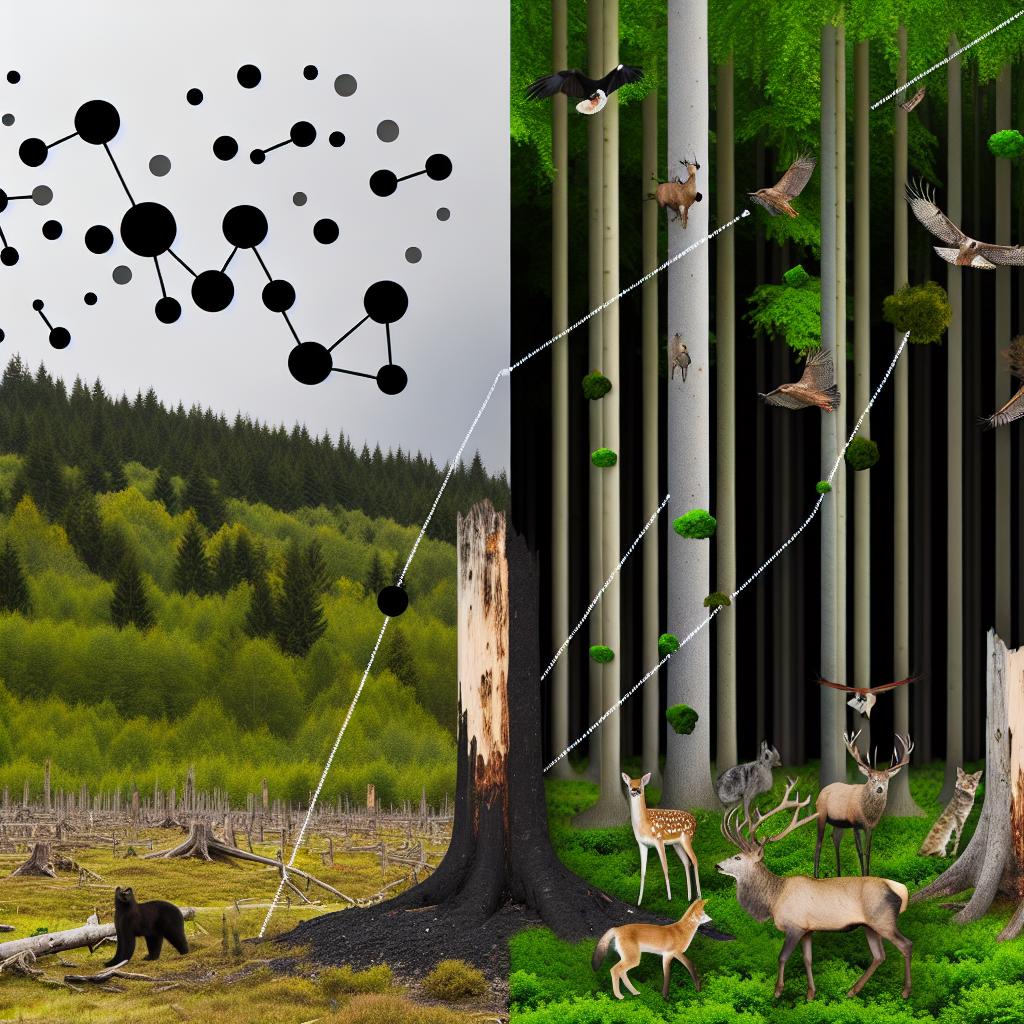
The Link Between Rewildering and Carbon Sequestration
The Concept of Rewildering
Rewildering, also recognized as rewilding, represents a forward-thinking approach to ecological restoration. This process involves enabling, encouraging, or directly facilitating the return of natural processes and native species to landscapes that have been modified or degraded due to human activities. Central to this methodology is the concept of embracing minimal human intervention, thereby allowing ecosystems to rejuvenate and evolve autonomously over time. The primary goal is to create ecosystems that are resilient, self-regulating, and capable of maintaining their biodiversity effectively.
As human activities continue to alter natural landscapes, rewildering surfaces as a solution aimed at mitigating these impacts. By prioritizing the restoration of natural habitats, rewildering helps in reversing biodiversity loss and supports ecosystem services essential for human well-being. This ecological strategy extends beyond just plant re-establishment and animal reintroduction but encompasses the holistic recovery of ecological systems, ultimately leading to environments that are better equipped to withstand external pressures such as climate change.
Carbon Sequestration Explained
Carbon sequestration refers to the process by which atmospheric carbon dioxide (CO2) is captured and stored, with the aim of mitigating or delaying global warming. This natural occurrence is prevalent in oceans, forests, soils, and other ecosystems that absorb more carbon than they release into the atmosphere. Enhancing the capacity of these natural systems to sequester carbon can potentially lower the concentration of atmospheric CO2, a major greenhouse gas contributing to climate change.
Carbon sequestration involves various biological, chemical, and physical processes. In terrestrial ecosystems, plants take in CO2 during photosynthesis, subsequently storing carbon within their biomass and in the soil. Oceans act as massive carbon sinks, absorbing CO2 and sequestering it through physical means and marine organisms. Thus, the ability of an environment to function as a carbon sink is integral in efforts to curb global temperature rise.
Rewildering’s Role in Carbon Sequestration
Rewildering plays a pivotal role in bolstering carbon sequestration efforts. By rejuvenating natural habitats, this ecological restoration method boosts the abundance and health of plants and microorganisms indispensable for carbon absorption. Ecosystems such as forests, grasslands, and wetlands, when allowed to flourish, perform as prominent carbon sinks.
For example, tree planting and forest ecosystem restoration through rewildering not only enhance biodiversity but also increase CO2 uptake. Restored forests can sequester considerable amounts of carbon, both above ground in the biomass and below ground in the soil. This dual-layered carbon storage is crucial in developing effective climate change mitigation strategies.
Soil Health Improvement
Another significant benefit of rewildering is its positive impact on soil health, a critical component in the carbon sequestration process. Soils that are healthy and abundant in organic matter are more efficient at storing carbon. Rewilding initiatives often lead to an undisturbed soil structure and enhanced root systems, both of which promote better carbon storage. Additionally, soil enriched with organic matter is more resistant to erosion, which further aids in stable carbon capture and reduces the risk of soil degradation.
Improving soil health through rewildering not only benefits the environment but also has potential agricultural benefits. Healthier soils contribute to more robust plant growth, leading to better crop yields and improved food security. Thus, the restoration of soils directly supports both ecological and agricultural sustainability.
Water Bodies and Wetlands
Rewildering initiatives also extend to the restoration of water bodies and wetlands, which are crucial for effective carbon storage. Often referred to as the Earth’s kidneys, wetlands are highly efficient at sequestering carbon due to their unique plant biomass and slow decomposition rates. By promoting the rewildering of these ecosystems, we support water purification and flood protection in addition to carbon storage.
Wetlands and other restored water systems play an essential role in supporting biodiversity and providing habitats for various species. These ecosystems also serve as crucial buffers against storm surges and rising sea levels, highlighting their importance in climate adaptation strategies.
The Broader Impacts of Rewildering
The impacts of rewildering extend beyond carbon sequestration, offering numerous additional ecological benefits. These include heightened biodiversity, improved water quality, and increased resilience to the adverse effects of climate change. Functional ecosystems provide vital services, such as clean air and water, fertile soils for agriculture, and habitats for pollinators and wildlife, all of which are critical for human survival and prosperity.
The success of rewildering projects hinge on collaboration with local communities and stakeholders. Each ecosystem possesses unique characteristics, necessitating strategies that are tailored to the specific ecological and social context of the area. By engaging with local knowledge and ensuring community involvement, rewildering can serve as an effective tool in the broader fight against climate change, while simultaneously promoting environmental and social well-being.
Moreover, rewildering initiatives contribute toward achieving global biodiversity targets and sustainable development goals. By revitalizing ecosystems, we not only safeguard the natural environment but also empower local communities to thrive in harmony with nature. As such, rewildering exemplifies a holistic approach that integrates ecological restoration with socio-economic development, ultimately paving the way for a more sustainable future.